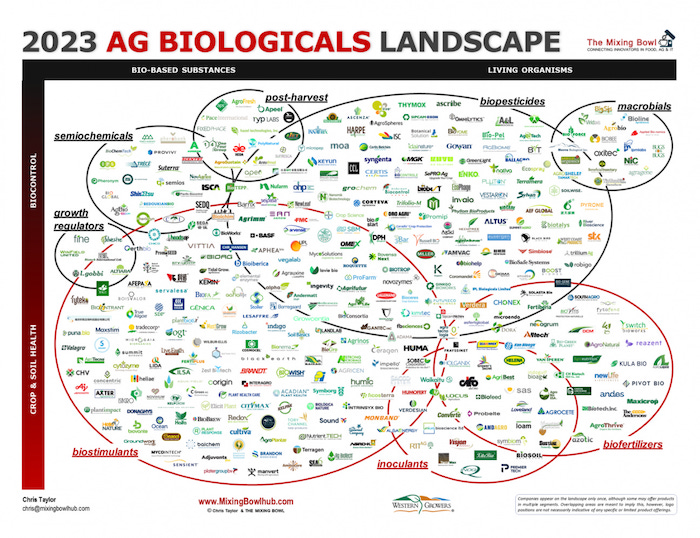More than half of the farmers who responded to No-Till Farmer’s 2023 No-Till Operational Practices Survey used a biological product in 2021 — the highest number ever reported on the annual survey.
At 50.2%, biological usage among no-tillers is more than twice as likely as the general farm population. A Stratus Ag Research survey of nearly 2,300 farmers using all tillage practices reported only 23% of their respondents used biostimulants in 2022.
“Biology will become more important to no-till farmers, ranking equal to physical and chemical properties of soil,” says Randall Reeder, a No-Till Legend and retired Ohio State University agricultural engineer, in a 2023 article about the future of no-till. “We’re learning that living organisms in the soil, nurtured with continuous no-till and live roots, are essential.”
“Applying biologicals can address challenges with synthetic or cultural tools alone…”
Nurturing — and improving — soil will require effective biological products, and that’s the barrier the many companies promoting these products must overcome.
Crowded Landscape. The Mixing Bowl, a company that does research on technology in agriculture, identified 1,200 companies that are making biological products. The company then created a massive Venn diagram showing where 400 of those products fit in the biostimulant, biopesticide, biofertilizer and inoculant categories.
Shane Thomas, an agribusiness analyst and author of the Upstream Ag Insights agriculture technology newsletter, summed up the biological landscape as “large, fragmented and complex to decipher.”
“Biologicals, particularly biostimulants and biofertilizers, can be considered weak link problems, where the overall outcome depends on the performance of the weakest elements,” Thomas writes in his newsletter. “To improve outcomes and eliminate poor performers, it is necessary to increase barriers to entry and requirements for selling products.”
Those requirements should be based on objective data, much like the report Dave Franzen and his team at North Dakota State University released, so farmers can see past bold marketing claims and dig into details. But no-tillers can’t rely on universities alone with the vast number of products on the market — and the time it takes for universities to complete trials.
On-Farm Trials. Clearly, no-tillers see the potential of biologicals, as illustrated by the vast difference in usage among no-tillers and the general farm population mentioned earlier. With hundreds of products making dozens of claims on the market, no-tillers should turn to on-farm trials to assess what works for their soils. There is no better proving ground than your own farm.
“Biologicals could ensure that we have adequate nutrition for growing plants…”
No-tillers have a history of being early adopters of practices that make sense for both the soil and the wallet, and it seems biologicals could do both.
“As we increase plant populations and yields, we have smaller root systems, so we have to find other ways to ensure that we have adequate nutrition for these growing plants,” says Logan Woodward, a graduate student of plant pathologist Fred Below’s at the Univ. of Illinois. “The answer is to add biologicals. Most of the commercial biologicals can be applied in-furrow at planting so they’re placed with the seed. These bacteria then live along the root surface and will have the best impact on yield.”
Thomas envisions a holistic approach to biologicals in the future, using them in conjunction with synthetic inputs.
“This holistic approach considers the interconnectedness of the entire farming system and optimizes performance and resilience,” Thomas writes. “Applying biologicals within this approach can address challenges with synthetic or cultural tools alone, leading to better outcomes for farmers.”








Post a comment
Report Abusive Comment